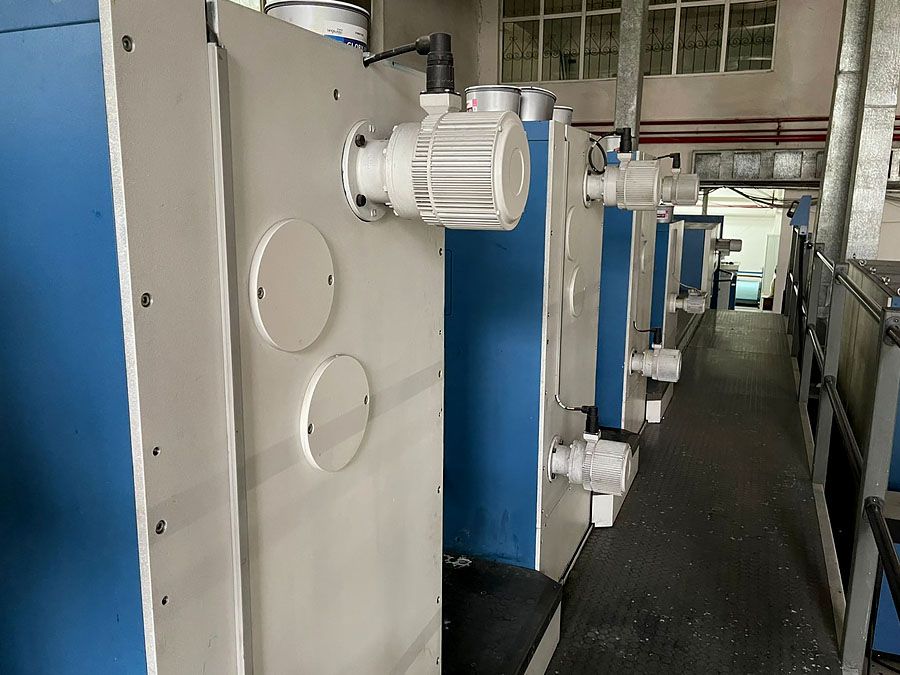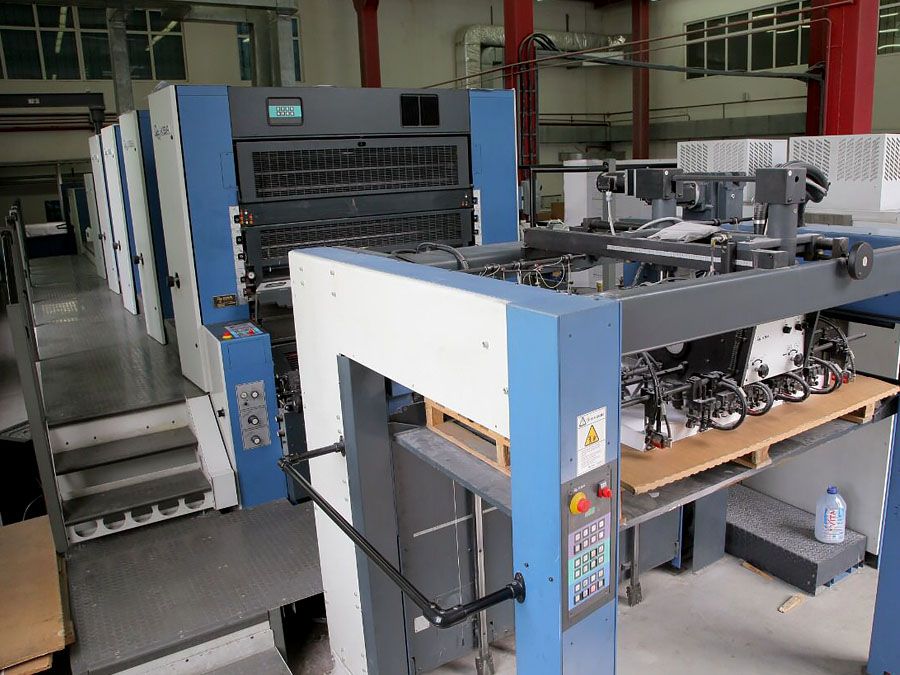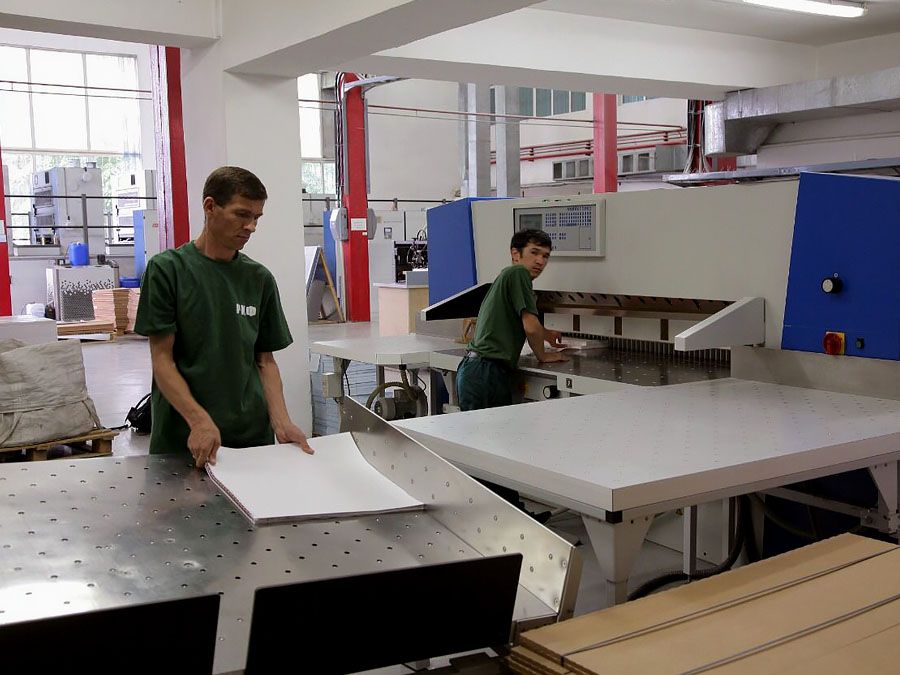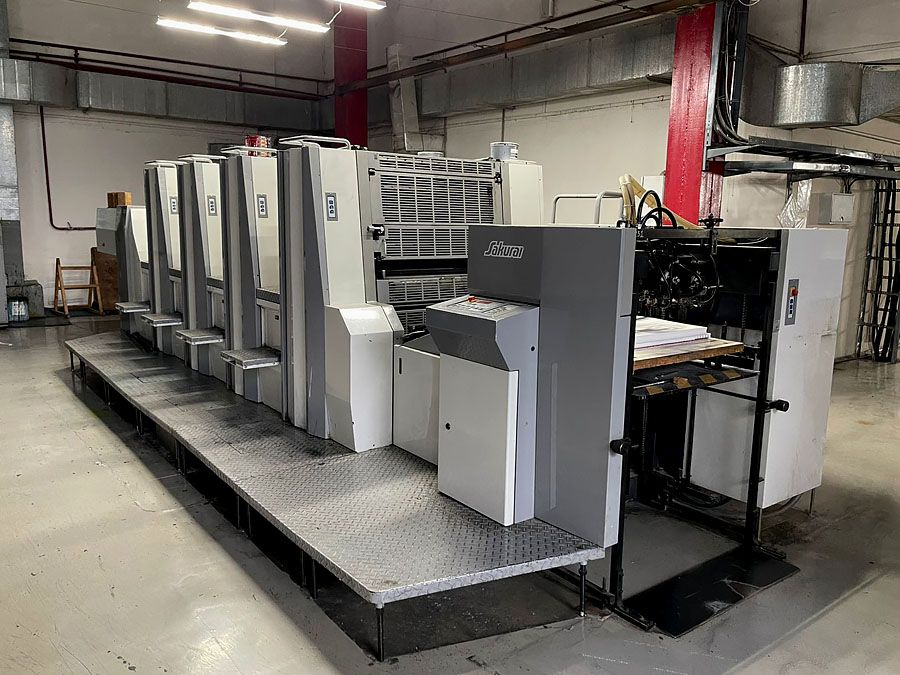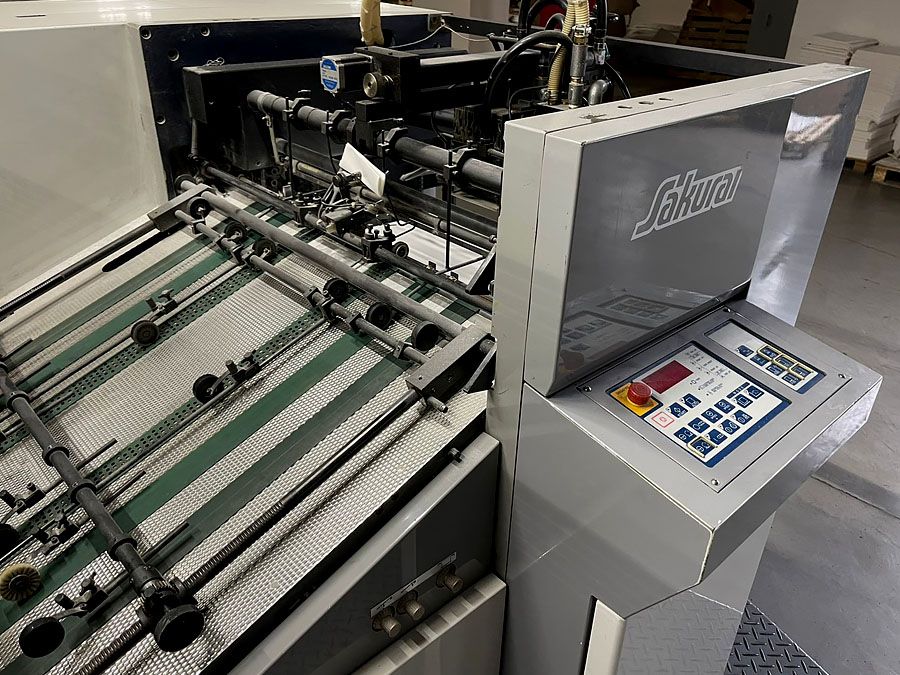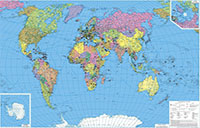Respublikalyk kartografiyalyk fabrika– branch of the RNE “Kazgeodesia”
Address: Almaty city, 11 Zhaisan Str.
Phone / Fax: +7 /7272/ 294 812
Email: This email address is being protected from spambots. You need JavaScript enabled to view it.
History of establishment
Republican Cartographic Factory (RCF) – branch of the RSE “NCGSI” - the only enterprise in Kazakhstan that provides topographic maps of all scales used in various areas of the economy and national defense. Current trends in cartography, publishing and printing production, new developments in computer technology enable to carry out preparatory and printing work for the full production cycle - from the creation and preparation of cartographic products and thematic works to the post-printing of run.
Republican Cartographic Factory provides a full range of printing services in the Republic of Kazakhstan. We provide services for the design, preparation and mass production of maps, plans, atlases for various purposes, representative and advertising printing products such as posters, books in any kind of binding, booklets, brochures, letterheads, leaflets, catalogues, stickers, leaflets, envelopes, etc.
Considering the high demand for print products from businesses, organizations and institutions, Republican Cartographic Factory – a branch of the RSE “NCGSI”, as acting in the same sectoral structure as the Land management agency (LMA) , State Scientific and Production Centre for Land Resources and Land Management (SSPCLRLM) and its state branch enterprises (SBE), offers and ready to carry out, at all times, high quality and on time printing work:
2. Land acts:
- as a private property;
- for the right to permanent land use;
- for the right of gratuitous land use;
- for the right of use of land for a fee;
4. Passports;
5. Land rental agreements;
6. Headed paper (wide range - as per the sample);
7. Resolution forms – markers;
8. Cadastre cases folders;
9. Folders for archival documents (coloured).
And any other printed products (standard technical document (STD), technical directive records (TDR), instructions, scientific and technical literature, academic papers, monographs, etc.) used in the course of work on land issues.
- “RCF” is awarded with certificate - "Altyn Kyran" People's Quality Mark. This document confirms that the Company's products meet the requirements of standards, with high quality and safe - this is due to the stability of the technological process and the constant search for ways to develop the company;
- “RCF” is awarded with the diploma by the “Qyran” Regional Consumers League, a public association, in the Cartographic and Printing Services category;
Available acknowledgements - from NISSA Eurasia, “Iz ruk v ruki” newspaper for fruitful cooperation, innovative approach to print production, successful joint projects and long-standing partnerships. In 2010, International Business Council (IBC) has nominated the Republican Cartographic Factory for the “European Grant” international, honorary business award.
Solving the issue of balanced load of the factory's production capacity, which is still relevant today, will ultimately ensure the stability of operations and the successful fulfillment of contractual obligations to the state. We invite all concerned in printing products to place orders with the RCF.
Computer-assisted cartography and GIS workshop
Throughout its existence, the workshop team has mastered all the necessary software to create the publishing originals of topographic maps in digital form using GIS and programs for graphic imaging.
The maps have a special place in GIS. The process of creating maps in GIS is much simpler and more flexible than in traditional manual or automatic mapping methods. It starts with data base creation.
The digitization of usual paper maps can also be used as a source of raw data. The practicability of creating maps in digital form is caused primarily by the fact that maps can subsequently be promptly updated, duplicated in the necessary quantity, and conveniently archived on CD-ROMs. The database can be updated at any time with new data (e.g. from other databases) and existing data can be adjusted as required. Moreover, technology and equipment installed by the RCF during printing requires the cards only in digital form.
The topographic database created in the RCF can be used as the basis for other departments and divisions, and data can be quickly copied and transmitted across local networks, which are set up by the factory's electronics engineers, without the need for third-party specialists. The connecting computers into a single network provides network users with new capabilities that are incomparable with those of individual computers, saves money by reducing the cost of computer maintenance, and enables documents to be transferred from one computer to another within the shortest time possible.
In addition, network allows selected (registered users on the file server) to access the information that the network operator allows them to access, which is crucially important in our work for provision of mode. A team for preparations for the publication of thematic works and cartographic products for various purposes is created in workshop.
Thematic maps are created in the state language and in Russian
- Political and administrative map of the Republic of Kazakhstan;
- Map of roads and railways in the Republic of Kazakhstan;
- Physical map of the Republic of Kazakhstan with oil and gas pipelines;
- Physical map of the Republic of Kazakhstan with mineral deposits;
- Physical map of Karaganda region at different scales;
- Almaty city plan with detailed junctions lay-out;
- Almaty city district maps;
- Tourist "For the hunter and fisherman" in the vicinity of Almaty;
The maps were created by order of the organizations concerned:
- Eurasian transport system;
- Political map of the world;
- Administrative-territorial map of Mangystau region;
- Physical map of Mangystau region;
- Administrative-territorial map of South-Kazakhstan region;
- Physical map of South Kazakhstan region;
- Physical map of South Kazakhstan region;
- Set of training maps “Economic Geography of the Republic of Kazakhstan";
- An exclusive road planning map has been produced by custom order
- “International transit corridor “Western Europe - Western China" and many other thematic maps.
Editorial department
The quality control and acceptance of the work is carried out at all stages of the production and updating of topographic maps by the editorial department. The quality control and acceptance of work shall be carried out in accordance with the requirements laid down in the relevant regulations on quality control and acceptance of surveying and cartographic engineering work.
The digital terrain maps should contain objects in symbols appropriate to its scale and the state of the terrain they describe. The editorial department not only produces state topographical maps, but also works on thematic maps.
Prepress processes and printing shop
The various types of printing work that take place before the material goes to press are called prepress processes. This includes typesetting, proofreading and editing of text, selection of illustration material, scanning and colour correction, design, layout of pages, assembly and layout of pages on the printed page, creation of the make-up page, printing form production. The main purpose of pre-press work at the RCF is avoiding possible errors and omissions that could find their way into the final print product and be replicated. The finished approved layout original is submitted at all times to the customer for approval, which helps prevent unwarranted claims after printing.
Pre-printing treatment
The pre-printing consists of preparing the runners for printing. Imposition is the arrangement of pages in such a way that, when printing and folding notebooks, the pages in the book are arranged in the right order. The proper imposing not only ensures that the printed product is exactly as originally intended, but also often results in savings in materials and work, and as a consequence reduces the cost of production.
The assembling which is understood to mean bringing the final file of a publication into exact conformity with the requirements of the printing process, is closely related to the process of imposition. This generally means adding special elements to the layout, such as crop marks, register marks, timing scales, etc. All of these elements are essential for printing which help control the printing process.
СТР
An intermediate process in the preparation of a print product for printing is printing form production. The factory has introduced technology of plate production, СТР - Computer-to-Plate. The use of this technology has significant advantages over traditional.
The most notable benefits of СТР include the eliminating film removal, editing and copying from the production process, increasing efficiency, shortening prepress and run times, - this results in lower paper and ink consumption, cost and service time, and the quality and accuracy of the plate reproduction is improved, cost of production is reduced and the risk of errors is reduced through automation of most work processes.
The rasterizing, converting the publication file prepared for output into a format understandable to the output device is part of the process. The rasterizing is a complex process, carried out on powerful computers by special-purpose programs. For the correct and fast rasterizing a source file is put into a specific format that the software understands. With the introduction of CTP technology at the factory, a stage of printing form production has moved to the prepress phase.
Print area
1. KBA RAPIDA 142 - 4 + LAVL 2 (Germany)
The state-of-the-art and elegant in its exterior form, easy to operate and easy to maintain, the most demanding, multi-colour, sheet-fed offset press.
- In terms of print width, KBA RAPIDA 142 - 4 + LAVL 2 is one-of-a-kind in Central Asia.
- Maximum paper size, mm - 1020 х 1420
- Minimum paper size, mm - 600 х 720
- This machine has a printing speed of 15,000 impressions per hour.
- For duplex printing - 10,000 impressions per hour.
With its high performance, versatility and high degree of automation, it creates all the conditions for economically rational printing production.
2. SAKURAI-OLIVER-475 SD (Japan)
High-speed, fully automated printing machine. Fast preparation of printing machine in case of run changes, precise and convenient settings as well as stable settings during run, thanks to quality components and high weight, high printing speed, increased overhead and take-up capacity, optimal print material thickness range make this model multi purpose. The machine is equally profitable for medium and long runs.
High practical reliability of the entire electronic machine base
Equipped with a two-level security system and noise reduction system that meets the world’s requirements.
- Maximum paper size, mm - 765 х 600
- Minimum paper size, mm - 400 х 260
- This machine has a printing speed of 4,000-15,000 impressions per hour.
Postpress area
WOHLENBERG - High-speed paper cutting machine (permissible width 185 cm, 92 cm);
WOHLENBERG - High-speed paper cutting machine (permissible width 92 cm);
DUPLOsystem 5000 – collating line, wire binding and with block cutting option;
BBBourg Binder 3002 – semi-automated glue binding machine *min ‒ 90 х 60 mm (books lacing on glue, etc.);
БНШ - sewing press;
GUK - folding-machine (4-cassette);
TITAN 165 - hot double-sided lamination (lamination width 150 cm);
Availability of the most state-of-the-art print offset machines at the factory ensures prompt and high-quality printing services! We offer professional offset printing of all kinds of printed materials. We use the most sophisticated technology, allowing us to meet orders in the shortest possible time.

Modernization of the state geodetic support system of the Republic of Kazakhstan provides for the development of state geodetic, leveling, gravimetric networks taking into account modern satellite and information technologies.


